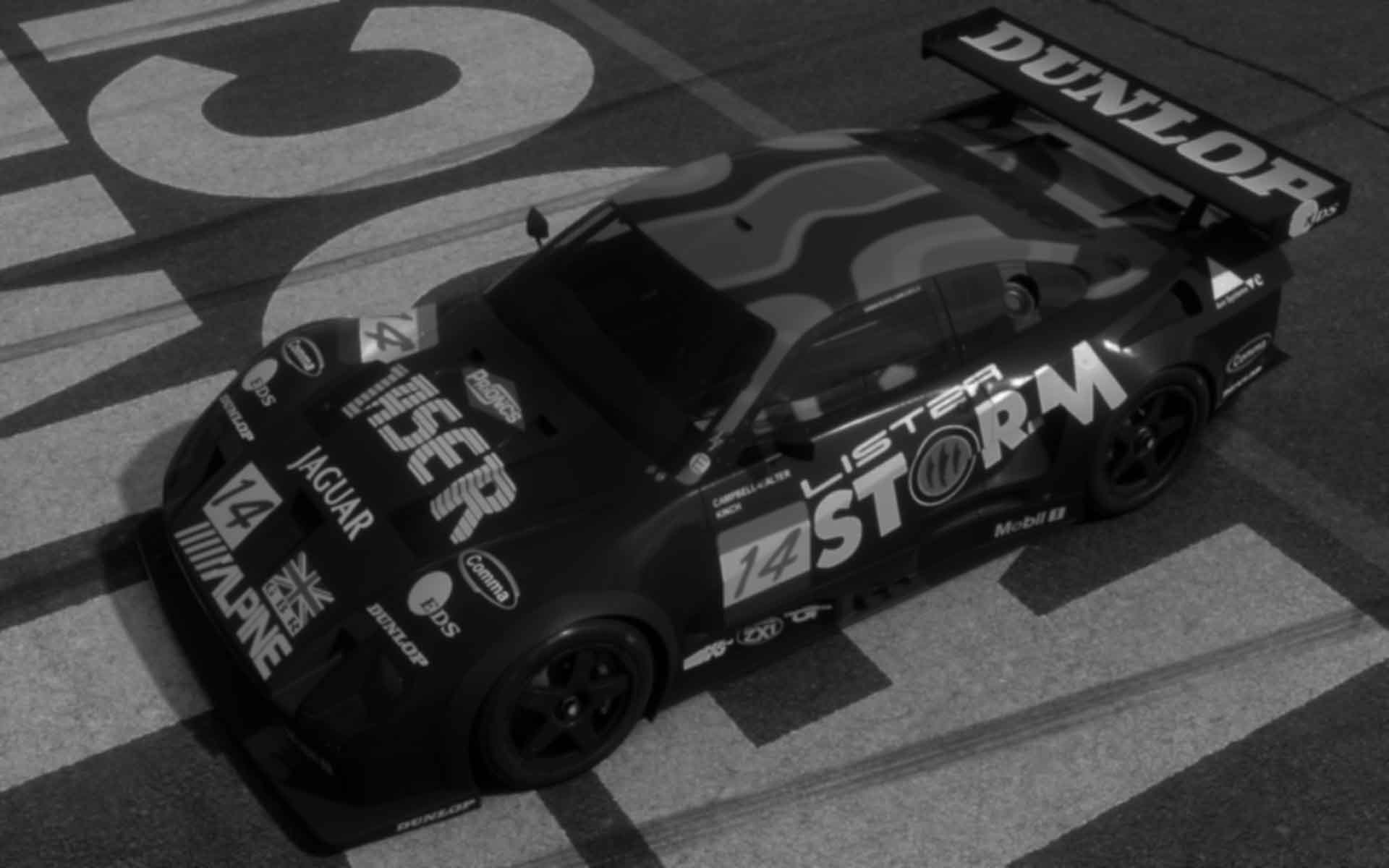
S4 Worked On “Lap of Legends” That Won Awards at Cannes
August 04, 2024
The Premise
What you saw on “Lap of Legends” remained unchanged from the very first day the concept was presented to us, and it’s a testament to the experience and professionalism of The Mill, the documentary filmmakers, that they approached us with such a fully polished idea.
Having said all of that, the brief was as simple as the execution proved to be complex. The final doc’ was hugely successful though, despite the complexities, winning four awards at Cannes this year:
- Gold Lion: “Entertainment Lions for Sport—Broadcast/Live Streaming”
- Gold Lion: “Digital Craft—Real-time Usage and Targeting”
- Silver Lion: “Entertainment Lions for Sport—Metaverse, New Realities & Emerging Tech”
- Silver Lion: “Digital Craft—Technological Achievement in Digital Craft”

The Brief
The brief required that current Williams F1 driver Logan Sargeant have a digital showdown at Silverstone against the virtual avatars of Williams Racing legends Mario Andretti, Nigel Mansell, Alain Prost, Damon Hill, Jacques Villeneuve, and Jenson Button, all in their championship-winning F1 cars.
Our original role at Straight4 was to:
- Build all the cars from these differing eras to the graphic standard required for film production
- Simulate each car to 100 percent of its historic values (using the studio’s purpose-built physics engine)
- Laser-scan and build an inch-perfect, virtual Silverstone track
- Train the studio’s AI to mimic perfectly the driving styles and personalities of 6 unique world champions
Over time, though, our involvement evolved to an all-encompassing consultancy role because things got rather complicated rather fast!

Day One Response
The tech needed to make this concept a reality was surprisingly not the first problem we encountered. Our first speedbump was a lot more basic. The racing.
As motorsport addicts, we instinctively knew that this race—between Logan and the AI—was just not possible. Technically, yes, we could achieve it but the problem was that, while Formula One cars have always been blisteringly fast, the tech advancements within the sport can sometimes result in cars, built just months apart from each other, having obscenely lopsided performance disparities.
So the idea that Formula One cars built thirty and forty years apart could somehow race in a compelling fashion against one other cast an intimidating shadow on the project from the very first day. This was, when we sat down with the brief, like pitting Manchester United’s starting eleven against a random assortment of primary school students.
Explaining The Predicament

Despite the heavy promotion of Formula One through Netflix, it became clear early on that the new fan base hadn’t fully grasped the nuances of the sport. The initial assumption was that Logan Sargeant would spend several laps fighting through the small cluster of AI cars, which would then culminate with a “showdown” during the final stanza of the race. At the studio, we all knew this wasn’t workable, and our first test races confirmed that.
I can tell you, that was not an easy call, when we had to reveal to The Mill what our initial shakedown races revealed. Logan’s car could pass the entire grid in just 300 feet! (For those of you who prefer metric—that’s in about five seconds!) The race was over before the braking zone for Turn One.
We brought along some footage, and our partners looked on in horror as we showed Logan’s car seemingly teleporting from last place on the grid to first in the time it took you to read this sentence. Not exactly compelling TV viewing!
Balancing Act

As you can imagine, this led to several emergency meetings to craft a more interesting race.
The first solution drafted in these meetings was the idea of giving every single car the vehicle “template” of Logan’s 2023-spec Williams FW45. This meant that, while Nigel Mansell’s car would look as if it came straight out of 1993, it would actually have eight gears, an energy recovery system, and DRS all working under the hood of our physics engine. On paper, this was a simple solution and something that sounded fairly logical … if, that is, you were a surface level viewer of the sport. As these tweaks are not difficult to make, we ran tests to show what would happen.
Not with great results …

The problems were two-fold: first, the cars, because of dirty air, offered little in terms of on-track passing action. They became, rather, the typical processional races we all became accustomed to watching on TV in 2023. Second, there was a further issue of authenticity. If the TV special targeted F1 superfans, a lot of dissatisfied viewers would result from the unrealistic performance of the older car models compared to Logan’s 2023 car.
What followed were more meetings and more suggestions. The next idea we adopted was—how about we just slow all the cars down? Our simulator can achieve this in multiple ways, including implementing weight penalties and using air restrictors. In essence, we physically restrict the amount of air entering the engine and dynamically adjust the fuel/air/spark ratio, which is also simulated.
We opted for the latter at my insistence, as it was a real measure the FIA introduced in 2005 when F1 regulations shifted to V8 engines, and the Toro Rosso team could not afford to ditch their now-outlawed V10 powerplants. The FIA basically shoved a device into the airbox to limit the maximum air intake to a calculated volume.
We took the same approach with the newer models, including Logan’s 2023 Williams FW45. A solid solution, but even before running test race scenarios, I had a sneaking suspicion that this wouldn’t quite work, and I was right.
When you start dynamically affecting the fuel/air/spark ratio of a motor, you’re affecting how the motor builds momentum. This is important because, in professional racing, passes don’t occur by a driver forcing their way into a gap under braking: it actually occurs on corner exit, with the attacking car accelerating earlier and drag racing the defending car down a long straight, or using the slipstream to parlay that excess momentum into an overtake. With heavily restricted engines, neither of that was possible.

The heavily restricted engines also meant that cornering was greatly simplified. In modern F1, cars are barreling into corners at superhuman speeds, and with the engines limited to such a degree, we were struggling to crack 250km/h on corner entry into the fastest turns of Silverstone. Add the exotic downforce elements on the cars and what we’d created was a field of cars with more downforce than they’d ever need through the turns.
With the engines neutered and speeds reduced, we’d built slot cars that couldn’t gain on each other or even pass. In effect, we’d wasted a lot of time and resources to reproduce the same problems we’d been trying to fix.
No Stone Left Unturned
It was at this moment that our collective experience at the studio—our collective motorsports experience—kind of “saved” the project.
Many of us are walking encyclopedias of auto racing history. Depending on who you talk to at the studio and where they reside, you can likely spawn a thirty-minute lecture on their favorite type of racing.
Some of my late-night YouTube odysseys years ago had led me to discover BOSS GP. It’s kind of nostalgia racing series featuring ex-Formula One cars from different areas. When an F1 car is retired from active competition, about 30% of the time they’re purchased by a wealthy private owner who then races them. Quite an expensive hobby, but anyway …
BOSS GP effectively gives these guys and gals five or six events a year to come out and roleplay as F1 drivers with very real, really quick, retired F1 cars. Since points are tracked and a champion is crowned, the events implement regulations and balance of performance rules to maintain fairness on the track where F1 cars from different eras compete against each other.

And that, of course, was exactly what we were trying to achieve with “Lap of Legends”.
So what was the secret sauce that allowed all these disparate cars in BOSS GP to compete against one another? In a word—tyres!
In BOSS GP, all cars ran modern slicks instead of period-specific compounds. So we went back to the simulator, gave all the cars identical tyres (as used on Logan’s Williams) and bingo—many of the older cars on the grid were suddenly a lot faster. Now all we needed was to BoP the grid. How? By retaining the air restrictors and detuning the quicker cars to match the speed of the median car on the grid instead of the slowest (including taking away Logan’s ERS and DRS systems).
The Human Element
Now that we’d solved the competition problem, the task turned to the next massive challenge: Creating plausible AI-driven avatars of some of the greatest race car drivers the world has ever known.
Oh, did I mention that all six champions were going to be on the TV show and would assess their virtual selves?
No pressure then!
A little secret ... we didn’t start this process from scratch. Our simulator software is actually quite similar to sports games, so if you’ve played FIFA or whatever, the idea of “player attributes” is something you’re probably familiar with. We have nearly identical mechanics for our AI opponents in racing simulators with reference-specific driving skills such as qualifying pace, race pace, consistency, and so on. I think we settled on sixteen for “Lap of Legends”.
Self-Preservation
Our second major challenge now presented itself during the initial test races with the AI. This stemmed from the fact that, above the individual driver parameters, exists a global AI “mastermind” that acts as a base set of parameters to govern how all AI racers approach performance driving and pack-racing dynamics.
The core team at Straight4 has always specialized in European sports car racing sims, with open wheel cars mostly available as bonus content off to the side. Because of this, we primarily design a lot of our global AI parameters with sports cars and prototypes in mind. Yes, the AI understand closing rates, when to launch a pass, and when to defend, but they understand them in the context of sports car racing in which braking distances are a lot longer, top speeds are generally slower, acceleration is more predictable, and bodywork can take a decent bit of abuse.
Our first test races reflected all of this. Yes, there were Formula One cars going around the track, but to me it didn’t look like an F1 race. Our duty was to ensure our robo-Mansell and robo-Prost represented the moves of lifelong open wheel racers. So, it was time to “educate” our AI and have them learn how to become efficient F1 drivers.
Self-preservation was the first issue we needed to refine to reflect an open wheel mindset. As mentioned, in sports car racing, bodywork can take a certain level of abuse. Our AI, however, was prone to ... ahem ... shutting the door aggressively when someone would launch an overtake, as if they didn’t comprehend the rather fragile wings and sidepods affixed to their cars.
We had to spend a lot of time teaching—and ensuring that our AI learned—that their cars were fragile, as well as the idea that drivers actually cooperate when launching an overtake. This is tough to pick up on television but it’s something that those of us amateur racers on the staff (yes, there are some!) fully understand: That is, when someone gets their nose inside of you, you instinctively move over by maybe a quarter of a car width to “give them a lane”.
We came up with a couple of creative ways to solve this: First, we gave each car a “personal space bubble,” which is something humans instinctively do in an open wheel car to protect their aero.
This delivered immediate results as the test races went from rather reckless divebomb affairs you’d typically see in the final lap of a gritty, aggressive sports car race at Long Beach, to very classy, calculated, fair passes where both parties showed the kind of respect you’d expect from F1 legends. It started looking like Formula One.
Additionally, we had to train the AI to look farther ahead up the track and make moves while being aware that they cover about 20% more ground than their parameter variables were set for. A good example of this was how our AI executed a slipstream overtake. In sports cars, which we initially set our parameters for, the cars don’t create a massive hole through the air, so it’s best to gradually get close to another car’s bumper before aggressively pulling out and sling-shotting past.
In Formula One, this isn’t really necessary: the cars punch such a big hole through the air, and the slipstream is so strong that you want to make your move somewhat early. So we worked to ensure that our AI was slipstreaming with that exact mentality, and made sure they launched their slingshot attempts at the right distance, at the right time, even if it was something as small as that.
By getting our AI to learn the sheer amount of ground they’re covering and “read” the track further up, they began making a lot wiser decisions during failed overtaking attempts. (Now if we could only do the same education for some sim racers!)
The test races, from this point forward, felt like actual F1 and the plausible decisions that experienced, calculated open wheel drivers would make, and I couldn’t wait for Logan to take a crack at it.
So how did Logan do? Go watch “Lap of Legends” and find out.
Just to conclude this part, and in case you like numbers, here is what it took to achieve this: 720 individual races on the studio’s purpose-made simulator—our game engine that will power our upcoming Project Motor Racing sim: 1,260 hours of footage from captured races: and 144,000 miles for the AI to learn how to mimic the speed, racing style, technique, and strategy of each of the champion drivers and their in-period cars.

The Final Product
What impressed me about the final product is how it genuinely looked and played out like a Formula One race, and more people than I expected immediately started brainstorming for a sequel.
As a motorsports addict, one concern with these projects is that they can sometimes veer into Hollywood territory, transforming Formula One into NASCAR with an increased number of lead passes in a single lap than what happens in an entire real-life race. With our AI technology, we weren’t just able to put past F1 legends on a race track against Logan Sargeant, but we got the most hardcore details of how an F1 race plays out to those behind the wheel absolutely perfect.
The proof is really in the commentary between Croft and Chandhok. At no point over the 15 laps do they have to explain away decisions that are out of character for a specific driver due to a lapse in our AI tech. To them, it quickly becomes just another race.
Mission accomplished. Great fun to have worked on, too, and a testament to the AI and the physics engine that’s coming your way with Project Motor Racing.
Now our AI can go back to racing sports car!
Thanks for reading. Don’t forget to
subscribe and follow








































